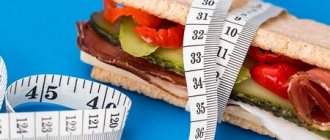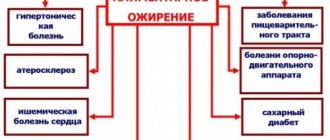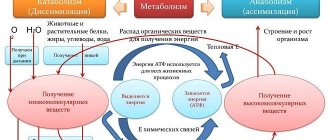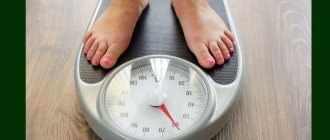After the primary stage, stage 2 obesity inevitably occurs if you do not fight the extra pounds. The person’s condition gradually worsens, shortness of breath becomes more pronounced, the heart no longer works as well as before. Women develop stage 2 obesity more often than men. At this stage, you can still cope with the problem on your own if you resolutely take care of yourself. True, not all women understand how to properly lose weight with stage 2 obesity, or they break down after barely holding out for a week.
We recommend reading:
- Obesity 1st degree
- Obesity 3 degrees
Obesity 2 degrees, body mass index
The disease itself can be caused by many factors, from banal overeating to problems with thyroid hormones. Each type of obesity requires the right approach and individual treatment.
Each obesity has its own degree, which is calculated based on the body mass index (BMI), that is, a person’s weight and height. The BMI system makes adjustments for body type and other characteristics of a person.
To find out your BMI, you will need to divide your weight by your height in meters multiplied by 2, that is, WEIGHT: (HEIGHT x HEIGHT). For example, a person weighing 70 kg and height 1.70 m will have an index of 24.22, which means that the weight is normal.
How to determine how many kg are extra in case of obesity of the 2nd degree?
In the table provided by the World Health Organization, an index of 18.5 to 24.99 is considered normal. Overweight from 25 to 30, first degree obesity - from 30 to 35, second degree - from 35 to 40, third degree - more than 40, the system allows you to quickly calculate the approximate norm for each.
Find the answer
Are you having any problem? Enter “Symptom” or “Name of the disease” into the form, press Enter and you will find out all the treatment for this problem or disease.
The above figures are general figures; for people of different ages and gender, the values may change, but not significantly. Second-degree excess weight is dangerous and quite common.

It significantly affects health, unpleasant symptoms appear:
- Sweating;
- Dyspnea;
- Tachycardia;
- Swelling of the limbs.
Therefore, if you discover even a slight excess of mass, it is advisable to get rid of it. The developed disease of the second degree in girls can cause aesthetic and psychological problems, so it is worth consulting with a doctor to identify the cause.
You don’t need to start losing weight on your own, radically restricting yourself in food, you may not achieve results, but you will harm your health.
Types of obesity
There are three main types of obesity:
- nutritional;
- exogenous-constitutional;
- visceral.
With nutritional obesity, severe shortness of breath appears during physical activity. On the abdomen you can distinguish a fold of fat, which in appearance resembles an apron. With such obesity, the likelihood of developing cardiovascular diseases increases.
On a note! Nutritional obesity is more common in women over 50 years of age and is rare in young adults.
Exogenous constitutional obesity depends entirely on diet and genetic predisposition. That is, if you are prone to obesity and the menu includes a large number of high-calorie foods, excess weight is guaranteed.

Visceral obesity is the most dangerous type, since fat in this case accumulates on the internal organs. This can cause the development of diabetes.
On a note! To determine the presence of visceral obesity, you need to measure your waist circumference. Normally, for women this figure should be less than 80 cm, and for men – 95 cm.
Alimentary and exogenous-constitutional type
Nutritional obesity is the simplest condition; it is caused by excessive food consumption to a greater extent, and to a lesser extent by minor deviations in the functioning of digestion and hormones.
You can come across the concept of the primary manifestation of the disease. The doctor prescribes standard methods without drug or hormonal therapy.
Basically, everything will be aimed at normalizing the lifestyle. Diet and activity are the main weapons in the fight against this type of disease.
The exogenous-constitutional appearance is a secondary manifestation. It develops due to malfunctions of the digestive system. The localization of deposited fat changes compared to the classic manifestation.
So in women, most fat is deposited on the hips, chest, and pelvic area. The disturbances are associated with the production of food enzymes and profound damage to the metabolic process.
Treatment with diets will not help at all, so the root causes of obesity are eliminated. If the problem is in digestion, then drugs are prescribed that can help it; if there is a problem with thyroid hormones, then drugs that increase thyroid hormones are used.
Predisposing factors
- Physical inactivity. We sit at the computer all day, watch TV in the evening, use the phone, and lie on the sofa.
- Binge eating. Delicious food, of course, is a pleasure, but if your beauty and health suffer from it, you should think about the amount of food you eat. If you don't stretch your stomach, it won't require much food.
- Diet. Few people count calories, but everyone knows the foods that make you fat. They know, but they still eat it because it’s delicious.
- A number of diseases lead to gaining extra pounds. In such cases, it is impossible to achieve weight loss without treating the underlying disease and constant nutritional control.

These include:
- Endocrine diseases (hypothyroidism, insulinoma, hypogonadism), in which metabolic control processes are disrupted;
- Cushing's disease;
- Diseases of the digestive organs responsible for processing food and breaking down fats;
- Disturbance in the functioning of the hypothalamus;
- Hormonal disorders;
- Taking certain medications (contraceptives, hormonals, glucocorticoids, insulin;
- Mental illnesses.
Genetic factors:
- Froelich syndrome;
- Lawrence-Moon-Bardet-Biedl syndrome;
- Prader-Willi syndrome;
- Congenital leptin deficiency.
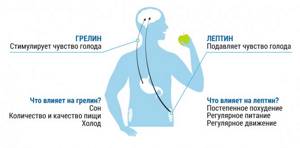
When no measures are taken when gaining a little weight, pleasant obesity develops into grade 1 obesity and, with further progression, goes into grade 2, and this is already serious.
Causes of illness in women
The reasons will be hormonal imbalances and other health problems, poor nutrition. Looking at them in detail, we can come to the conclusion that the main failure is low thyroid hormones.
Thyroid hormones are responsible for metabolism and its speed. That is, at normal levels, all nutrients provide the body with energy.
When the level is low, the body cannot convert carbohydrates into energy and converts them into fat deposits, and excess fluid is retained (due to this, swelling occurs).
A condition where hormones are low is called hypothyroidism. Disturbances in the production of the female hormone estrogen will also cause excess weight gain. Equally common are eating disorders, which lead to rapid weight gain.
People who violate norms have excess carbohydrates in their diet, and most carbohydrates are fast (sweets, starchy foods). Such nutrition has a positive effect on fat gain, but is harmful to health; pancreatitis or cholecystitis may develop.
The patient may not realize how much food he consumes, and attribute the problems to “metabolism,” but the culprit is excess nutrition. The only way to lose weight is to start eating right and doing physical activity.
Causes of excess weight
The key causes of excess weight are:
- Imbalance between energy expended and the amount eaten;
- Diseases and disorders in the functioning of body systems;
- Genetic disorders.
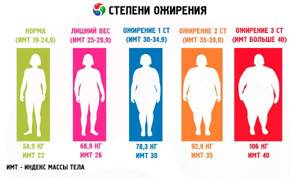
Why do these reasons arise? In some cases, the situation can be corrected, and in others it can only be adjusted.
Since ancient times, the body has learned to create reserves of nutrients in case of famine - there was little food, and it was not always possible to get it. Our smart body has memorized the material we have covered (like we do the multiplication table), and if the volume of food received exceeds the energy expenditure, it will not throw anything away, but will put it aside just in case.
Until recently, in order to survive in difficult conditions, a person spent a lot of physical strength and ate a lot of food to restore it. Now mechanization and automation have appeared in the service of humanity, but eating behavior has not changed. An imbalance has arisen, the occurrence of which is provoked by many factors.
Features of the disease in men
For men, as for women, many of the reasons are the same, but there are features that are unique to them. For example, the cause of obesity in men will be a hormonal imbalance associated with a decrease in testosterone and an increase in estrogen.
Then female-type weight gain will begin, and gynecomastia (formation of fat glands in the breast area) is possible.
Advanced disease in men requires surgical intervention, at a minimum, to remove gynecomastia.
Many factors provoke a decrease in testosterone and an increase in estrogen, for example, a sedentary lifestyle, low activity. Predisposition also plays a significant role; many people naturally have an endomorphic physique, characterized by excess fat mass.
For men, obesity plays a role; excess weight interferes with the normal functioning of the reproductive system.
Erections disappear, libido decreases, and the general condition worsens. Body weight is closely related to the hormone testosterone, it is important to maintain your weight at a normal level.
Excess weight due to overeating in men also has a special character. It often happens that, due to an unbalanced diet, a man experiences disruptions in his digestive system, which leads to the formation of fat. Without reaching protein standards, but eating carbohydrates, the process of obesity starts.
Complications
Nutritional obesity, in the absence of proper treatment, continues to progress, which causes irreversible processes in many body systems. This leads to serious health consequences.
The most common and possible complications:
- androgen deficiency;
- infertility;
- pain in muscles and bone tissue;
- fast fatiguability;
- hypertension;
- hormonal disbalance;
- heart disease;
- insulin resistance;
- metabolic disorders;
- dyspnea;
- fatty liver and heart;
- oncology;
- pathologies of the gastrointestinal tract;
- potency - in men, inability to bear a child - in women;
- problems with the gallbladder and liver;
- psychosocial disorders;
- diabetes mellitus type II;
- sleep apnea.
As already mentioned, the person himself is primarily to blame for the development of nutritional obesity. By correcting your mistakes in a timely manner (even at stage I) through proper nutrition and sufficient physical activity, you can stop the progression of the disease. But if you start it and don’t take care of your own body and health, the consequences can be irreversible. It is worth considering at least that heart attack, oncology, apnea (frequent complications of this pathology) often lead to death, and psychosocial disorders lead to compulsory treatment in mental health centers.
Drug therapy
Treatment of stage 2 obesity with medications is highly effective, but they can only be used as prescribed by a doctor after undergoing a diagnostic test.
Many drugs are ineffective if a person has normal obesity that is not associated with problems in the body. One common medication prescribed by your doctor may be the gastrointestinal lipase inhibitor orlistat.

It is suitable for an overweight person, regardless of the reason. In simple terms, this medicine is a fat blocker; it simply interferes with their absorption from food.
For people with bulimia (excessive appetite), drugs that reduce appetite are used; they can also be used in people who do not suffer from this disease, but in a much smaller dosage.
The drugs are called anorexics and are widely available in pharmacies.
There are other drugs that can suppress digestion due to natural elements, for example, medications and even foods containing fiber slow down the absorption of food, this reduces the amount consumed.
You don’t need to start using any of the drugs yourself, this can only cause harm.
Prognosis and prevention
With timely treatment, alimentary fat deposits disappear without consequences. With stage 2 abdominal obesity, the prognosis is less favorable. Prolonged stress on internal organs often provokes the development of chronic pathologies. To avoid progression of the disease, it is necessary to adhere to certain preventive measures:
- do not exceed the daily calorie intake;
- limit alcohol consumption;
- increase calorie consumption through physical activity;
- improve psycho-emotional status;
- treat concomitant diseases.
Nuances in nutrition to lose extra pounds
An important area in the treatment of excess weight is diet. Many people incorrectly perceive it as a radical refusal of products, but it requires a competent approach.
Firstly, the diet begins with a diet, you need to add foods to it:
- Fiber from vegetables and fruits;
- Omega 3 polyunsaturated fats, preferably fish;
- Vitamins, minerals;
- Foods containing protein, such as egg whites, chicken breast.
Most diets are built on the principle of reducing the amount of carbohydrates; protein must be consumed in strict accordance with the norms for humans, that is, 0.8 g-1 g per kg of human weight per day.
Floury and sweet carbohydrates are removed, energy is taken from complex ones in the form of various porridges and boiled potatoes. Any fried product is also removed.
Reduce the consumption of salt and salty foods.
Such a change can give the first results after just one month; nutrition is not significantly reduced, and the person still gets everything he needs. After the first results, they begin to gradually cut back on complex carbohydrates, reaching 100-200 g per day.
Maintaining them at this level ensures a result that does not harm the body and is completely safe.
There is no need to start a diet by reducing all carbohydrates, bringing them immediately to a minimum level.
This will be a strong stress for the whole body and will affect it. There is no need to give up all food, excluding even protein and fiber. This will not give results, but will lead to wear and tear on the digestive system and all organs.
What is recommended to eat?
When losing weight, you can use the same daily routine and diet, but for many this will be real torture.
Sample menu for the week
You can use the menu:
- First day. Breakfast, oatmeal in the amount of 90 g with the possible addition of fruit to it. Snack, 75 g low-fat cottage cheese. Lunch, 210 g of cheese soup consisting of vegetables, low-fat broth. Afternoon snack in the form of 1 banana. Dinner, 200 g shrimp, 1 egg along with 50 g cucumbers and tomatoes.
- Second day. Breakfast, 125 g buckwheat porridge, 1 tomato. Snack, 1 banana. Lunch, vegetable broth with the addition of chicken 190 g. Afternoon snack, vegetable salad 150 g. Dinner, semolina porridge 100 g, 150 g vegetable casserole.
- The third day. Breakfast, cottage cheese and banana casserole 150 g, 20 g dried apricots. Snack, 100 g of yogurt. Lunch, 200 g low-fat soup with meatballs, 50 g fish fillet. Afternoon snack, 2 loaves of bread, 1 apple along with 200 ml of yoghurt. Dinner, 225 g of baked pollock, several tomatoes.
- Fourth day. Breakfast, 110 g of cottage cheese along with two bananas. Snack, 2 apples, 2 kiwis. Lunch: 200 g fish soup, 2 cucumbers. Afternoon snack, 100 g of cottage cheese, walnuts. Dinner, 200 g baked chicken breast with vegetables.
- Fifth day. Breakfast: 120 g of rice porridge with 20 g of cheese. Snack, 200 ml kefir, 1 apple. Lunch, borscht 200 g, 100 g vegetable salad. Afternoon snack, 100 g of cottage cheese and banana. Dinner 150 g round potatoes, cucumbers.
- Sixth day. Breakfast, 50 g of cottage cheese with the addition of a teaspoon of honey. Snack 50 g biscuit, apple. Lunch, buckwheat soup 200 g, beef stew 50 g. Afternoon snack, 200 ml fermented baked milk. Dinner, boiled chicken fillet, vegetables.
- Seventh day. Breakfast, 200 g of simple buckwheat porridge, 1 egg. Snack, apple, orange. Lunch, mushroom soup 200 g, baked breast 100 g. Afternoon snack, 100 g cottage cheese, 2 bananas. Dinner, 150 g vinaigrette, 100 g turkey.
This menu is quite different and allows you to start losing weight. If you don't have time to cook something complicated, you can loop any day of the menu. Proper nutrition is the key to losing weight while fighting obesity.
Buckwheat soup recipe
You will need meat, buckwheat, potatoes, carrots, onions, garlic, salt, pepper. The meat is chopped and placed in water for 1.5 hours. All ingredients are chopped.
At this time, the buckwheat is heated a little in a frying pan. The onions are fried together with carrots, and everything received is mixed in water. After mixing all the ingredients, salt and pepper are added, and the soup is given time to brew.
Therapeutic methods
Any person suffering from excess weight should consult a specialist. The doctor will be able to analyze the patient’s condition, identify the causes of obesity and find a way to eliminate them. When conducting a thorough examination, the following techniques are used:
- immunostimulation;
- cleaning procedures;
- psychological help;
- checking blood sugar levels;
- checking hormonal levels.
Treatment of obesity of the 2nd degree occurs with the involvement of several specialists: nutritionist, psychologist, therapist, cardiologist and others. A fitness trainer will help you develop an individual sports training program. Diets, medications and surgery are considered the most important ways to combat pathology.
Drug treatment
Pharmacy products are prescribed only when changes in diet and sports activities do not bring positive changes, and excess weight threatens the development of serious diseases.
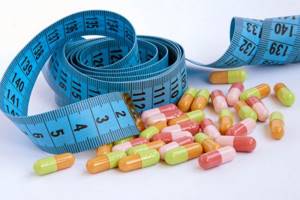
Only a specialist can select effective remedies, since there is no universal panacea against obesity. Drugs designed to combat extra pounds can be divided into 2 groups:
- Anorexics. The active components of these drugs affect the brain, in particular the hypothalamus, where the saturation center is located. The drugs reduce appetite, suppress hunger, and help with diets. The most widely used products are: Slimia, Reduxin, Goldline and others.
- Carbohydrate and fat blockers. Such medications for losing weight do not allow these elements to be absorbed in the intestines. In the second stage of obesity, drugs give a positive result only in combination with physical activity and proper nutrition. The most popular drugs include Listata, Orlistat, Orsoten and others.
Diets
To get rid of excess weight, you need to eat right. Nutritionists develop a healthy menu so that all dishes are as healthy and low-calorie as possible, however, changing your diet should not be debilitating. Contrast and fasting days are required, which activate fat burning. The diet includes a lot of fiber and vitamins. These elements are found in large quantities in vegetables, nuts, whole grains, and fruits.

There are many options for diets, but there is no universal diet suitable for everyone. Sometimes, in order to lose weight, you have to try several options until you find the one that promotes the most intense fat burning. The main requirements when forming a diet include:
- The dishes selected are simple, but with sufficient energy value. The human body should not experience a lack of essential microelements, amino acids, and vitamins.
- To effectively cleanse the intestines and stimulate the process of losing weight, foods high in fiber are used.
- The basic principle of any diet at various stages is the consumption of low-calorie foods.
- The list of prohibited foods includes soda, smoked, salted, canned foods, spicy spicy dishes, high-calorie desserts, and alcoholic beverages.
- Consumption of salt, fat and sugar should be kept to a minimum. This rule applies to all products made from dough and fried foods. Dairy products should be low-fat, bread should be day-old, and fruits should have a low sugar content.
- The volume of food portions is reduced, and the number of meals increases to 6 times a day.
- During the first two stages of obesity, unsweetened fruits and vegetables that contain fiber are especially beneficial for the body. Experts recommend that patients enrich their diet with root vegetables and green leafy vegetables. Drinks you should choose are green tea and low-fat kefir.
- Fasting days are an indispensable part of the weight loss process. They help cleanse the body of harmful toxins and waste. During this time, a person can only eat certain foods. Apple or cottage cheese days are often used. Any vegetables except potatoes are a good alternative.
The number of calories in the daily diet must be reduced, but the figure should not be lower than 1200 kcal. Let's look at a sample menu for the day:

- the first breakfast consists of boiled meat with sauerkraut and coffee with the addition of milk and sweetener;
- second breakfast: low-fat yogurt and green tea without sugar;
- lunch: milk soup, boiled or baked dietary meat (chicken or rabbit) with vegetables, berry juice;
- afternoon snack: baked or fresh apple;
- first dinner: vegetable stew and fish in any form, but not fried;
- second dinner (before a night's rest): a glass of low-fat kefir or an apple.
To burn extra pounds, it is important to stick to a low-calorie diet, which should be varied. Milk soup is replaced with borscht without meat, vegetable stew with salads or carrot casserole. It is necessary to gradually switch to a healthy menu and get used to eating small portions.
Sport
Without proper physical activity, all diets will be ineffective. Not only special exercises will be useful, but also tourism, housework and dacha work, walking, cycling, and swimming.

You can choose sports exercises yourself, since their goal is weight loss, and not the correction of any parts of the body. If you involve a fitness trainer in the process, an individual training system will be developed that will accelerate weight loss.
At stages 1 and 2, it is worth selecting exercises that are suitable for the patient’s age and health status. Training is repeated 3 – 5 times a week. A minimum of 30 minutes is allotted for classes.
Hiking, gymnastic exercises and water treatments are the ideal start to the day for every person suffering from excess weight. Overweight children should see worthy role models in their own parents. Close people will be able to interest the baby in exciting hikes and excursions, walks in the park and active recreation.
Surgical intervention
Surgical therapy is used only as a last resort, when other methods do not give a positive result. Often, radical treatment of obesity begins at stages 3 and 4, as well as with an increased risk of developing concomitant diseases. There are several types of operations that help get rid of excess weight:
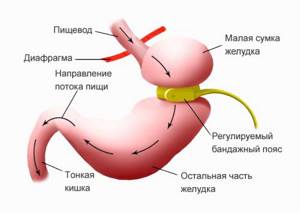
- Resection. It involves removing part of the stomach, which leads to a decrease in the volume of this organ. As a result, the feeling of fullness occurs much faster, portions and frequency of meals are reduced.
- Shunting. An operation during which a so-called “bypass corridor” (shunt) is formed. Through it, most of the incoming food does not enter the stomach, but directly into the intestines. The technique is used infrequently because it negatively affects the digestive processes.
- Bandaging. It involves installing a special ring on the stomach, which divides the organ into two parts. The food consumed then enters the first part, causing a feeling of fullness. Then the food enters the second part of the stomach, then into the intestines. Banding is a reversible operation and is therefore used in most cases.
- Ballooning. Using the endoscopic method, a balloon made of silicone is placed into the stomach. Over time, its size increases, occupying part of the organ, which contributes to faster saturation.
- Liposuction. During this manipulation, fat tissue is removed from certain areas of the body. Even if the entire operation is performed correctly, you should not hope for a long-term effect. The patient only removes aesthetic defects, but the cause of obesity still remains, which leads to a quick return to the original weight.
Any operations give the desired result only in combination with regular sports training and a balanced diet. People who are prone to obesity are forced to adhere to these rules throughout their lives.
Obesity of the 2nd degree is a serious pathology, which often leads to the development of concomitant diseases. For the purpose of prevention, it is necessary to maintain the correct daily routine, pay due attention to physical activity and proper rest, and adhere to a balanced, healthy diet.
Treatment with folk remedies
In folk medicine, there are several reliable remedies that can give an impetus to weight loss. Mostly safe decoctions and teas are used, which slightly improve metabolism and are used in complex treatment.
Tea consisting of birch leaves, walnuts, burdock and hop cones will help well. After mixing all the ingredients, brew a tablespoon in a glass of boiling water.
Brewed gooseberries provide vitamins. You will need to add a tablespoon of fruit, pour 200 ml of boiling water, and drink the resulting drink.
Various greens, mixed and brewed with boiling water, are excellent for tidying up digestion. All folk remedies help in losing weight; they are not the main ones in treating the disease.
A set of recommended exercises, how many of them should be performed
People think about running, but in women with stage 2 obesity it is contraindicated; it can seriously harm the knee joints. Any other cardio activity is suitable, such as long walks or cycling.

The main thing is to start burning more calories than you consume. You should always start small and gradually add load. It is worth setting yourself up to exercise regularly over a long period of time.
You can do light physical exercise at home, especially in the beginning it will be useful. There is a smooth warm-up of all parts of the body and stretching.
This lasts approximately 30 minutes. Together with a diet, you can achieve serious results in just one year.
Cost of diet for excess weight
The cost of products allowed for use in the diet for obesity is low. The exception is seafood products, the price of which significantly increases budget costs. Taking into account the large number of fresh vegetables and fruits required in the cold season, the price of products increases. According to rough estimates, food for a week in winter will amount to 1,800 rubles per week.
You need to understand that mild obesity poses no danger to the body. Compliance with dietary norms in combination with active physical activity guarantees normalization of body weight. To prevent breakdowns, you need to constantly monitor the calorie content of your meals, maintain a drinking regime, and maintain a food balance.
IMPORTANT! Informational article! Before use, you should consult a specialist.
